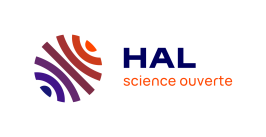Dokumentdetails
ID
oai:HAL:hal-04165757v1
Thema
PARC adverse outcome pathways chemicals endocrine disruption non-animal test methods regulatory toxicology thyroid disruption PARC endocrine disruption thyroid ... [SDV.SPEE]Life Sciences [q-bio]/Sa... [SDV.TOX]Life Sciences [q-bio]/Tox...Autor
Ramhøj, Louise Axelstad, Marta Baert, Yoni Cañas-Portilla, Ana, I Chalmel, Frédéric Dahmen, Lars de la Vieja, Antonio Evrard, Bertrand Haigis, Ann-Cathrin Hamers, Timo Heikamp, Kim Holbech, Henrik Iglesias-Hernandez, Patricia Knapen, Dries Marchandise, Lorna Morthorst, Jane, E Nikolov, Nikolai, Georgiev Nissen, Ana, C V E Oelgeschlaeger, Michael Renko, Kostja Rogiers, Vera Schüürmann, Gerrit Stinckens, Evelyn Stub, Mette, H Torres-Ruiz, Monica van Duursen, Majorie Vanhaecke, Tamara Vergauwen, Lucia Wedebye, Eva, Bay Svingen, TerjeLangue
enEditor
HAL CCSD;Frontiers Media
Kategorie
Wissenschaften: Lebenswissenschaften
Jahr
2023
Auflistungsdatum
15.12.2023
Schlüsselwörter
chemicals species nams disruption thyroid th testZusammenfassung
Current test strategies to identify thyroid hormone (TH) system disruptors are inadequate for conducting robust chemical risk assessment required for regulation.
The tests rely heavily on histopathological changes in rodent thyroid glands or measuring changes in systemic TH levels, but they lack specific new approach methodologies (NAMs) that can adequately detect TH-mediated effects.
Such alternative test methods are needed to infer a causal relationship between molecular initiating events and adverse outcomes such as perturbed brain development.
Although some NAMs that are relevant for TH system disruption are available-and are currently in the process of regulatory validation-there is still a need to develop more extensive alternative test batteries to cover the range of potential key events along the causal pathway between initial chemical disruption and adverse outcomes in humans.
This project, funded under the Partnership for the Assessment of Risk from Chemicals (PARC) initiative, aims to facilitate the development of NAMs that are specific for TH system disruption by characterizing in vivo mechanisms of action that can be targeted by in embryo/in vitro/in silico/in chemico testing strategies.
We will develop and improve human-relevant in vitro test systems to capture effects on important areas of the TH system.
Furthermore, we will elaborate on important species differences in TH system disruption by incorporating non-mammalian vertebrate test species alongside classical laboratory rat species and human-derived in vitro assays.
Ramhøj, Louise,Axelstad, Marta,Baert, Yoni,Cañas-Portilla, Ana, I,Chalmel, Frédéric,Dahmen, Lars,de la Vieja, Antonio,Evrard, Bertrand,Haigis, Ann-Cathrin,Hamers, Timo,Heikamp, Kim,Holbech, Henrik,Iglesias-Hernandez, Patricia,Knapen, Dries,Marchandise, Lorna,Morthorst, Jane, E,Nikolov, Nikolai, Georgiev,Nissen, Ana, C V E,Oelgeschlaeger, Michael,Renko, Kostja,Rogiers, Vera,Schüürmann, Gerrit,Stinckens, Evelyn,Stub, Mette, H,Torres-Ruiz, Monica,van Duursen, Majorie,Vanhaecke, Tamara,Vergauwen, Lucia,Wedebye, Eva, Bay,Svingen, Terje, 2023, New approach methods to improve human health risk assessment of thyroid hormone system disruption–a PARC project, HAL CCSD;Frontiers Media

Projection-Specific Heterogeneity of the Axon Initial Segment of Pyramidal Neurons in the Prelimbic Cortex
heterogeneity projection-specific

